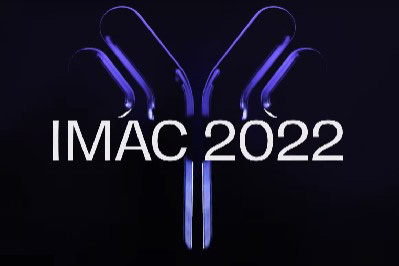 Medtouch
Medtouch Molecular Markers of Neutrophilic Granulocyte Dysfunction in Local and Systemic Purulent-Inflammatory Diseases
Аuthor: Teterin Yury Valerievich
Сo-authors: Chicherev Evgeniy Andreevich, Chudilova Galina Anatolyevna, Barova Natusya Kaplanovna
Federal State Budgetary Institution of Higher Professional Education «Kuban State Medical University» of the Ministry of Health of the Russian Federation
Russia, Krasnodar
The lack of an adequate response, hyperactivation or blockade of the functions of neutrophilic granulocytes (NG) — the key cells of the inflammatory process, leads to the development of atypically occurring purulent-inflammatory diseases (PID) [1-5]. The development of new molecular diagnostic technologies makes it possible to assess the relationship between the functional potential of NG and the level of expression of functionally important surface membrane receptors and the polarization of the phenotype of NG subpopulations in response to inducing signals in PID [4, 5].
The ability of NG to roll, chemotaxis, and readiness to turn on the microbicidal arsenal depends on the surface membrane receptors CD62L (selectin L, LAM), CD16 (FcγRIII), CD63 (tetraspanin LAMP-3), CD11b (Mac-1, CR3A) and the regulation of these processes is important for homing and NG activation. In this regard, it is of interest to study NG subpopulations expressing these receptors in local and systemic PID in order to identify NG dysfunctions and determine a disease prognosis marker. For this purpose, manifestations of peripheral blood (PB) were studied in children aged 10-17 years with hematogenous and post-traumatic syndrome osteomyelitis — AOM (Group 1, n=12), with soft tissue abscesses — (STA) (Group 2, n=10) before surgical treatment and 10 healthy children revision by age (comparison group). The proportion of NGs expressing surface membrane receptors CD16, CD62L, CD11b, CD63 was determined, taking into account their expression density by fluorescence intensity (MFI) (FC 500 Beckman Coulter, USA).
The presence in the PB of conditionally healthy children of 2 NG subsets was established: CD16+CD62L+CD11b+CD63— and CD16+CD62L+CD11b+CD63+, the proportion of which was 89,5(81,5; 96,8)% and 7,5(0,3; 8,7)%, respectively. The subsets did not differ in the level of expression of CD16 and CD11b receptors (p1,2>0,05).
At the same time, the CD16+CD62L+CD11b+CD63— subset had a higher MFI CD62L expression density level – 7,1(5,4; 9,3) versus 4,5 (3,5; 8,8) (p>0,05) than on the NG subset CD16+CD62L+CD11b+CD63+, which has the CD63 receptor with an MFI of 2,2(1,7; 3,2). In the study of PC NG in children with PID, both with STA and AOM, an increase in the proportion of the CD16+CD62L+CD11b+CD63+ NG subset by 8,5 times compared to the comparison group (p<0,05) was revealed. Also, with AOM and STA, a decrease in the proportion of the CD16+CD62L+CD11b+CD63—NG subset was shown (p<0,05). However, in AOM, this subsets was characterized by a lower expression density for MFI CD16 (p<0,05) and an increased level of MFI CD62L (p<0,05) and CD11b (p<0,05), while in STA there was decrease in MFI CD16 and MFI 62L, and MFI CD11b was at the level of the comparison group (p1-3>0,05).
Thus, in acute systemic purulent-necrotic process (AOM), a significant increase in the content of the hyperactivated subsets with the CD16brightCD62LbrightCD11bbrightCD63dimNG phenotype with a high cytotoxic and proteolytic potential, as well as the ability to damage tissues, was established. On the other hand, during exacerbation of the local purulent process (STA), the phenotype of the CD16dimCD62LdimCD11bbrightCD63dim subsets is recorded, which differs from the comparison group only by MFI CD11b — CD16midCD62LdimCD11bdimCD63dim, which may indicate a reduced biocidal potential of NG.
The results obtained on the assessment of NG subsets and phenotypic characteristics, taking into account the density of CD62L, CD63, CD11b, CD16, can provide not only information about the functional state of NG — active or defective inclusion of NG in the implementation of PID, but also reflect the severity of the ongoing process, and also serve as a molecular marker NG dysfunction in local and systemic purulent-inflammatory diseases.
Bibliography
- Rosales C. Neutrophil: A Cell with Many Roles in Inflammation or Several Cell Types? Front Physiol. 2018, Vol. 20, no.9, pp.113. DOI: 10.3389/fphys.2018.00113.
- Kelbich P.; Vachata P., Maly V., Novotny T., Spicka J., Matuchova I., Radovnicky T., Stanek I., Kubalik J., Karpjuk O.,Smisko F., Hanuljakova E. , Krejsek J. Neutrophils in Extravascular Body Fluids: Cytological-Energy Analysis Enables Rapid, Reliable and Inexpensive Detection of Purulent Inflammation and Tissue Damage. 2022, Vol.12, pp. 160. DOI :10.3390/life12020160
- Lehman H.K., Segal B.H. The role of neutrophils in host defense and disease. Journal of Allergy and Clinical Immunology. 2020, Vol.145, no.6, pp. 1535-1544 DOI:10.1016/j.jaci.2020.02.038
- «Neutrophil granulocytes: reflection in the mirror of modern ideas» / Edited by Nesterova I.V. and Chudilova G.A. Capricorn Publishing, UK, USA, Moscow, 2018. — 338 p. DOI: 10.1134/S0453881118050064
- Chudilova G.A., Nesterova I.V., Rusinova T.V., Kovaleva S.V., Pavlenko V.N., Tarakanov V.A., Barova N.K. Systemic and local effector function of neutrophilic granulocytes associated with the transformation of the phenotype of their functionally significant subpopulations in children with minor purulent infection of soft tissues. Bulletin of Peoples’ Friendship University of Russia. Series: Medicine. — 2020. — V. 24. — No. 3. — C. 218-226. DOI: 10.22363/2313-0245-2020-24-3-218-226
Читайте также
Аспекты иммунного статуса при фенотипе бронхиальной астмы...
Автор: Чурюкина Элла Витальевна
ФГБОУ ВО «Ростовский государственный медицинский университет» Минздрава России,
ФГБОУ ВО «Кубанский государственный медицинский университет»
...
Aspects of immune status in the phenotype of bronchial...
Author: Churyukina Ella Vitalievna
Federal State Budgetary Educational Institution of Higher Education "Rostov State Medical University",
Federal State Budgetary Educational...












Комментарии (0)